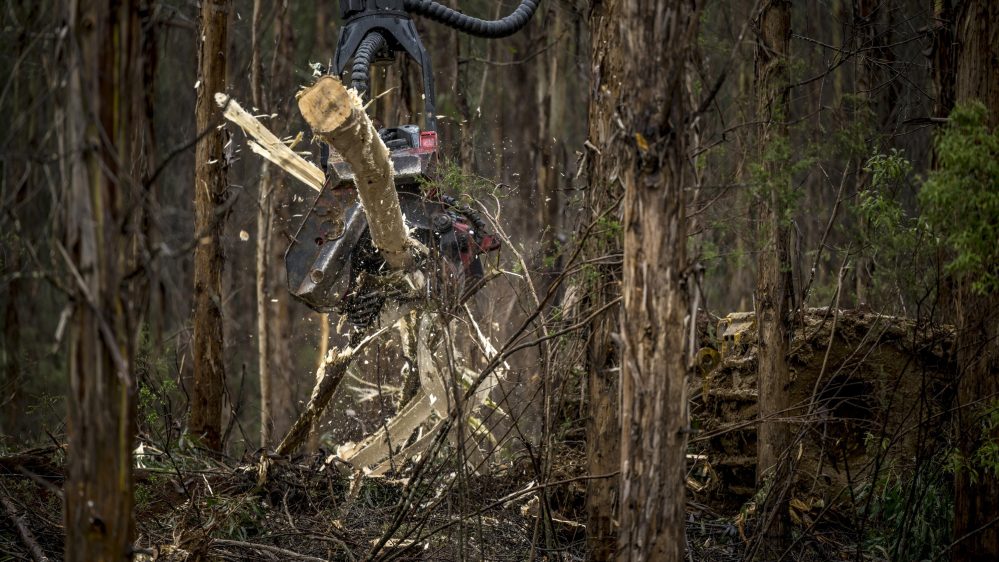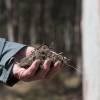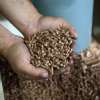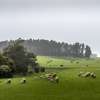
Harvesting trees: What you need to know
Posted 15 May 2024
Plantation Planning Harvesting and selling wood Economic benefits and markets Tree Alliance
Harvesting trees involves planning across multiple stages. This includes harvest inspections, legal approvals, clean-up and reforestation. Harvesting and transportation can be one of the biggest costs in commercial wood production. So farmers should be aware of the decisions that can impact their bottom line.
We spoke to Mauricio Acuna, Research Professor of Automation and AI in Forest Operations at Luke, Finland's Natural Resources Centre, about harvesting trees on Tasmanian farms.
Calculate costs and returns
Harvesting trees is a way to help Australia meet its timber demands and to provide extra income for farmers. But it’s important to consider the costs and returns early on in the tree-growing process, as small decisions can have a big impact later on.
Mauricio Acuna is a forest operations professor who has spent many years working with Tasmanian farmers to find the most effective ways to harvest trees.
"A main concern is harvest planning," says Mauricio. ‘During a rotation, most of the money is spent on harvesting and transportation. If anything is done badly, it’s going to affect the economics of the whole plantation.
"So we have to be really careful about how we plan the harvest. We need to know exactly the sort of providers that we have in our local area that can do the job.
"We need to be really careful about costs, which depends on the size of the property, the location, the type of machines and the contractor.
"Another consideration is to have good inventory data. It sounds very obvious, but inventory data is essential to make decisions in forestry.
"We also have to understand the returns," adds Mauricio. "It doesn't have to be something too fancy, it could be an Excel spreadsheet. But you should determine what is going to be your returns on your costs during the whole rotation. Take into account all the logging costs, transport costs and the income from selling of your wood.
"And then we need to consider the environmental regulation or any sort of legal regulations, because any intervention has to be approved by the Forest Practices Authority."

Choose the right equipment for the job
Harvesting trees on farms is often referred to as small-scale harvesting. This can come with unique challenges and considerations, and different harvesting technologies. Mauricio says that the equipment used for harvesting is part of the planning process.
"When we talk about small-scale harvesting, it doesn't have to be a different sort of equipment. In forestry, we need to use the right equipment for the forest," says Mauricio.
"So it could be conventional equipment or it can be small-scale harvesting equipment – even farm tractors or chainsaws. There is no recipe. It depends on your tree size and terrain conditions.
"You can use small-scale harvesting equipment if your trees are small. Or your plantation could be small, but you still have big trees. In that situation, you still have to use conventional equipment.
"Then one of the issues is how you transport the machinery from one place to the other. The relocation costs for conventional equipment can have a big impact on the economics of your operation.
"Besides the tree size, harvesting cost is the key driver for harvesting decisions," adds Mauricio.
"Conventional equipment has greater hourly costs than small-scale equipment. That means it's more expensive to run the machine per hour. But it’s not necessarily more expensive per cubic metre, because you are more productive than with small-scale equipment. So in the end, that approach could be more cost effective.
"It’s very important to know exactly what the break-even point is in your cost curve."

Make a plan before planting
Making a profit from commercial wood production is all about selling goals and planning. Planning should start as early as possible and consider the whole lifecycle of the plantation. This can help shape the management approaches for your trees.
"Farmers need to prepare for any harvest operation in advance. Even before the plantation is established.
"You have to set clear goals. You need to know what species you're going to plant, what's going to be your target product, what sort of money you can achieve, what is going to be the rotation age, when you are going to do interventions like thinning.
"We need to know at what age we are going to do a thinning, we need to know exactly what’s going to be the goal.
"For example, is the objective to remove trees with poor growth rate? Is it to keep the most vigorous trees that are resistant to pests and can capture more carbon? Typically, for the farmer with commercial plantations, the goal is to maximise the forest’s value at the end of the rotation.
"Another consideration is the available markets. Location is very essential here. It could be that you are too far away from the nearest market and that could affect your returns.
"It can't be the case that you're growing very beautiful trees while you are far away from your nearest mill. Transport costs are going to affect the whole economics or your plantation.
"You need to know this in advance, before you plant your trees," adds Mauricio.
"Seek professional advice, because there is expertise and tools to help you make decisions. Private Forests Tasmania has tools to map your plantations and make predictions about interventions.
"Any harvesting decision is important, so farmers need to know about the key drivers that affect their operations."
Find out more about harvesting wood and access tools to support your decision making with the Tree Alliance Knowledge Hub. Visit www.treealliance.com.au.





